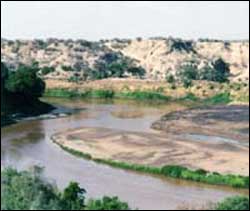Several large earthquakes with magnitude higher than 8 on the Richter scale have already occurred along the margins between the Nazca and South American tectonic plates, under the ocean off Ecuador and Colombia. This region is vulnerable, all the more so because since the 1980s, Ecuador’s oil export terminal is sited within it. More information is needed on this zone of extremely high seismic risk. For this reason, two scientific campaigns, “Amadeus” and “Esmeraldas” were launched on 3 Februa
For the first time, two types of genetic material–both nuclear and mitochondrial DNA–have been used to verify a new species designation of great whale, according to the Wildlife Conservation Society and other groups in The Royal Society’s Proceedings: Biological Sciences. According to the recent study conducted by researchers at WCS, the American Museum of Natural History, Fordham University, and University of Maryland, the North Pacific right whale has been confirmed as genetically dist

Fossils push human emergence back to 195,000 years ago
When the bones of two early humans were found in 1967 near Kibish, Ethiopia, they were thought to be 130,000 years old. A few years ago, researchers found 154,000- to 160,000-year-old human bones at Herto, Ethiopia. Now, a new study of the 1967 fossil site indicates the earliest known members of our species, Homo sapiens, roamed Africa about 195,000 years ago. “It pushes back the beginning of anatomically modern humans,” says
Keeping watch on the world from orbit is helping to make it a safer place to live, heard European journalists visiting the Earth and Space Week in Brussels. Experts recounted how Europe’s Global Monitoring for Environment and Security initiative is already delivering operational information services and it is set for further expansion.
A day-long series of press briefings at the Earth and Space Expo focused on the joint initiative of the European Commission (EC) and ESA known as G
UC Davis researchers have discovered two key signals that tell fish how to handle the stress of changing concentrations of salt as they swim through different waters.
Not many fish can travel between saltwater and freshwater. To maintain the right internal salt level, their gills must pump up salt from freshwater but excrete it in the ocean. “Fish that can survive both environments are able to resist many kinds of stress,” said Dietmar Kueltz, an assistant professor of animal

To gauge the toxicity of Pfiesteria, the important single-celled fish predator that was the culprit behind a number of fish kills and fish diseases along the East Coast in the 1990s, researchers need to both use the proper study methods and recognize that certain populations of the organism, called strains, are toxic while others are not.
That’s the main result of a wide-ranging study by Dr. JoAnn M. Burkholder, professor and director of the Center for Applied Aquatic Ecology at N